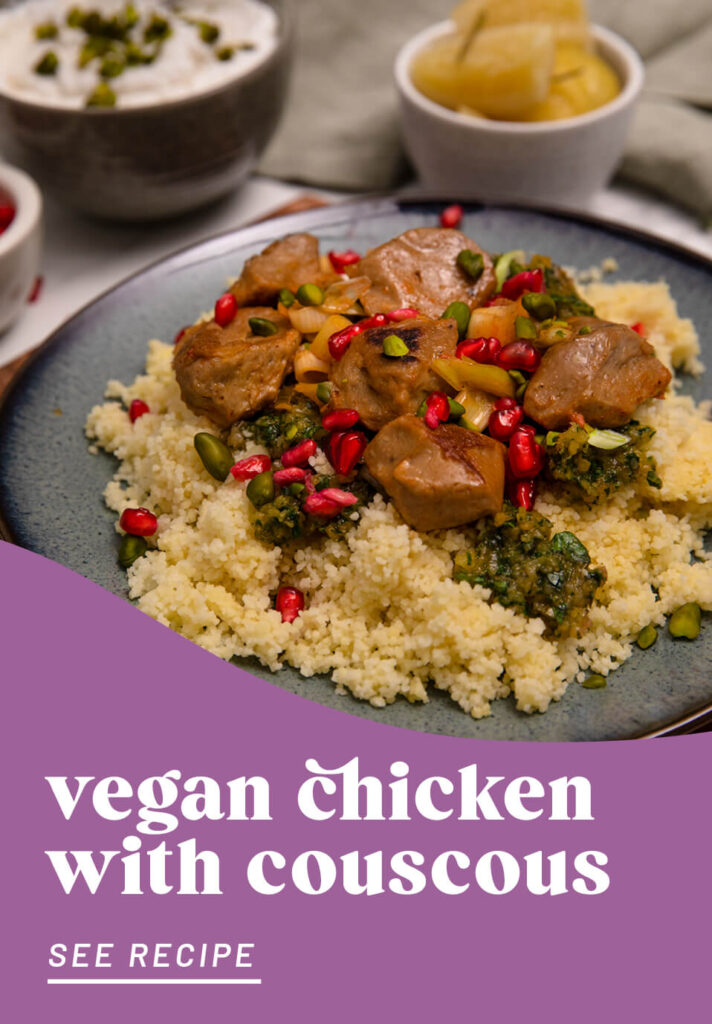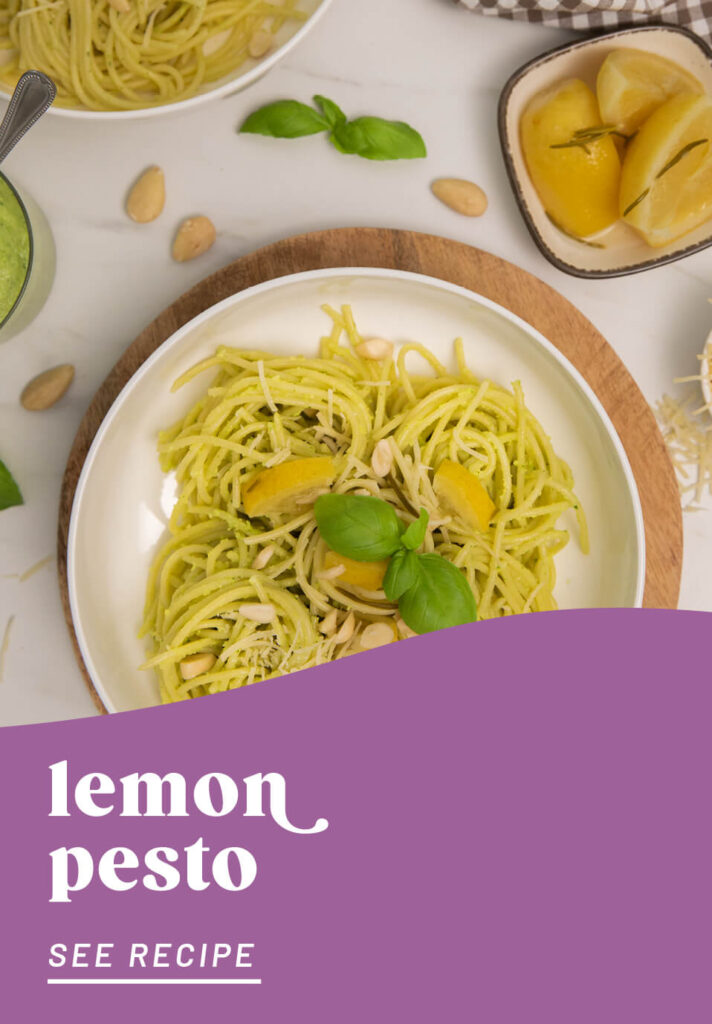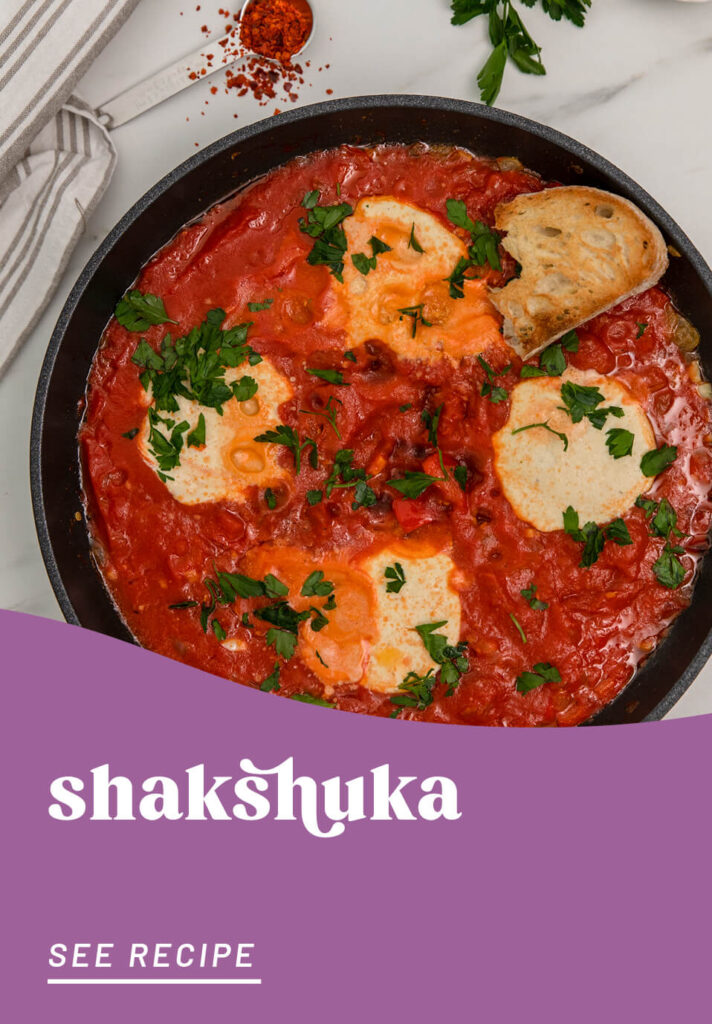VEGAN WORLDTRIP
The Levant – where different cuisines and cultures collide

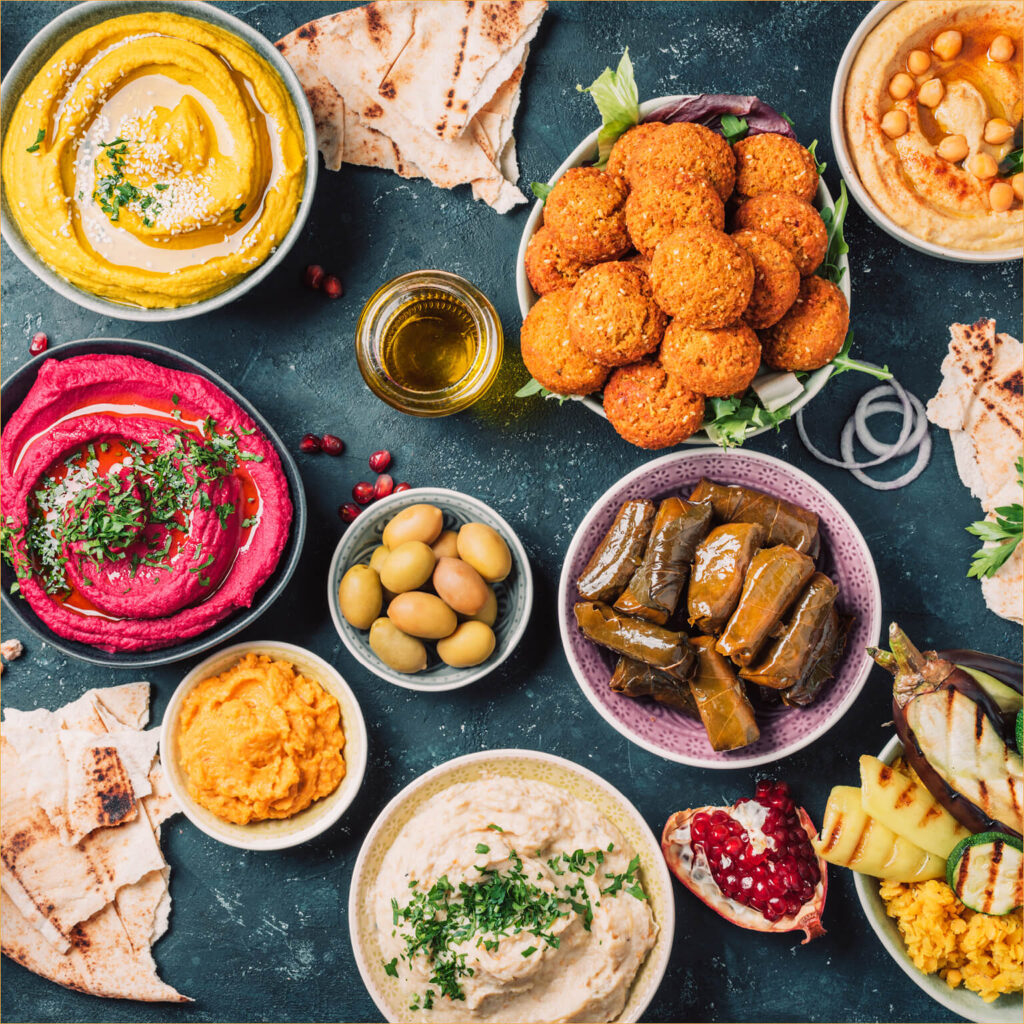
This time, our VEGAN WORLD TRIP is taking us to the beautiful Levant region: the land bridge between Africa and Eurasia, and a culinary melting pot. This has always been a place where scents, spices and flavors from all over the world collide and blend.
Few other regions in the world have been shaped by as many cultures or as much history as the Levant, which spans the eastern coast of the Mediterranean Sea and its hinterlands; that is to say what is today Syria, Lebanon, Israel, Jordan, the autonomous Palestinian territories, in addition to the southern Turkish province of Hatay. Various trade routes took shape during Early Antiquity, and, thanks to their roles as reloading points for wares from the Orient which had been brought across the Indian Ocean, the caravan routes of Asia, and the Silk Road, many cities in this region amassed huge riches and became the cradle of astounding civilizations. Unfortunately, from earliest times up until the present day, the various neighbors have had trouble getting along, which has often led to conflict. And yet, they have so much in common – especially when it comes to food!

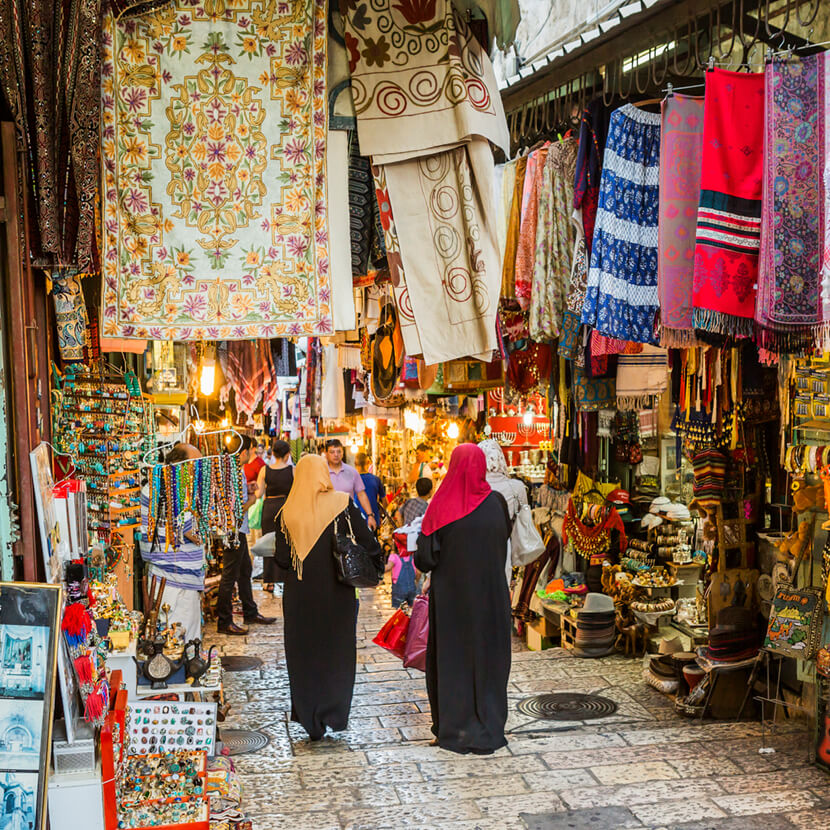
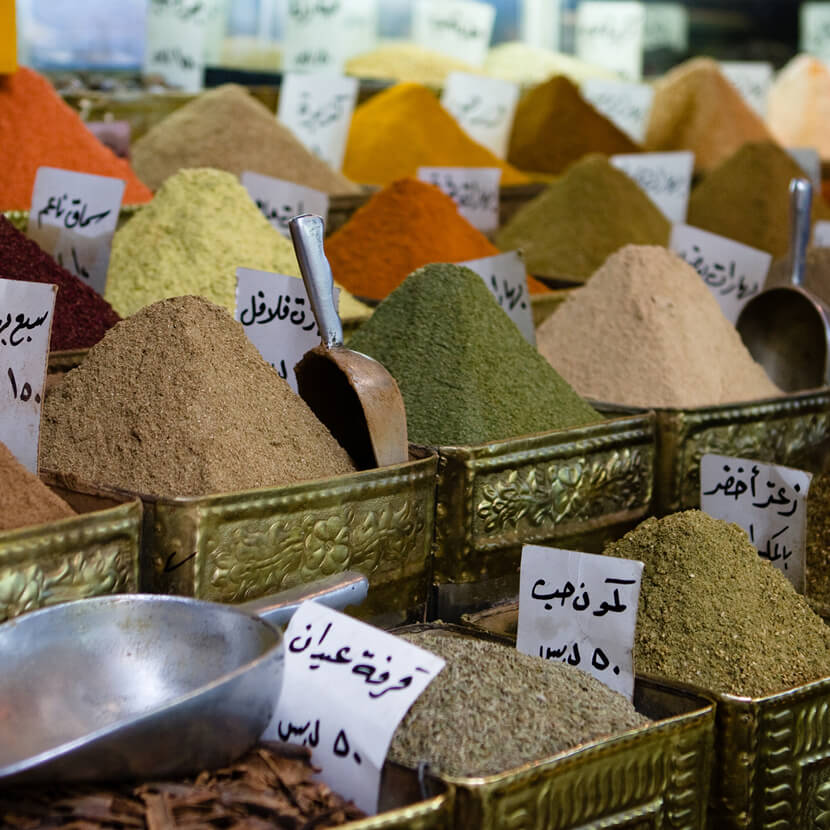
Where it all began

The Levant (and the Fertile Crescent, i.e. the area spanning the Levant to the Persian Gulf) is known to be, alongside China and Mexico, one of the places where humans first became sedentary – that is to say the first time humans made the transition from being hunter-gatherers to shepherds and farmers. Evidence of this so-called “Neolithic Revolution” is to be found in the form of domesticated plants for use by humans, such as emmer wheat, Einkorn wheat, barley or spelt. You could even, at a push (!), consider that this was the origin of vegan life!
The oldest mines in the world are to be found here. Egyptians, Hittites, Phoenicians, and Israelites all lived here. Apart from a few local and temporal exceptions, the Levant was a part of the Neo-Assyrian Empire, the Neo-Babylonian Empire, the Persian Empire, the Empire of Alexander the Great and his successors, and then of the Roman Empire, until it was almost completely Christianized while part of the Byzantine Empire, only to then be Arabized within the space of just a few centuries during the spread of Islam. The area’s historical mishmash also included the Crusades, although little was contributed to the region’s culinary diversity during this short period. In contrast, particularly under Arab rulers, the area always had a certain multicultural character, which resulted in astounding synergies. Every people, every trader contributed something, creating facet upon facet in people’s lives and in their cooking pots. People studied and researched together, which of course meant that they also ate together.
MEZZE: A multi-faceted way of eating
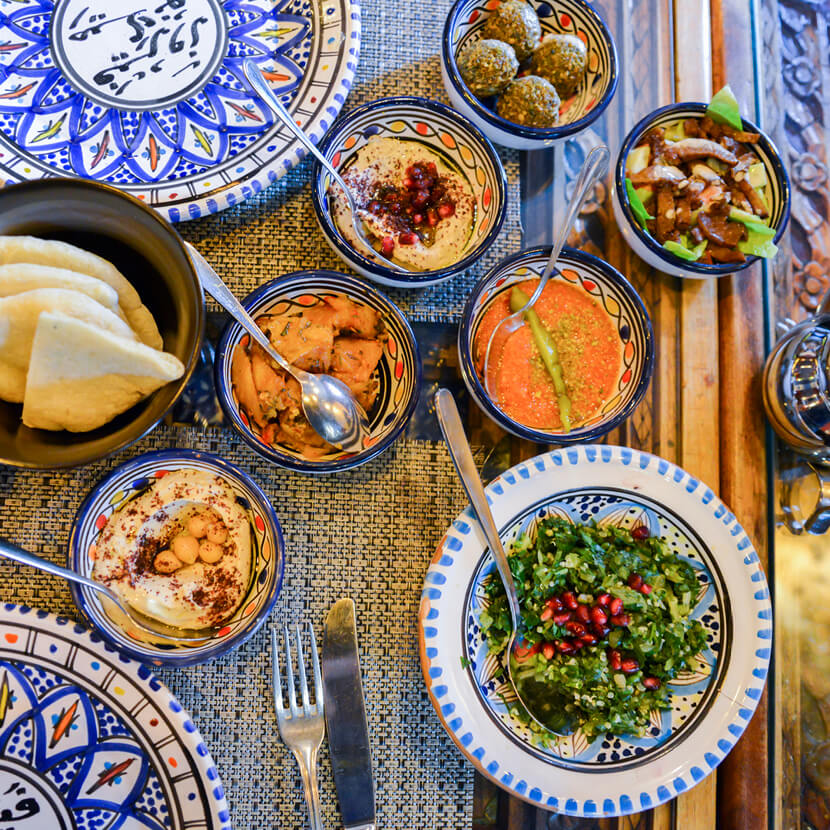
Even today, Middle Eastern cuisine is characterized by plenty of vegetables, little meat and a broad range of spices. Perhaps the most striking aspect of Levantine cuisine is MEZE or MEZZE. The term (which presumably originates from the Persian word mazze or mazdan, meaning “taste” or “food stall”) refers to a way of serving starters or small dishes. Interestingly, it did not originally refer to the specific dishes themselves. Rather, it refers to a way of eating which stands for the cultural heritage of this beautiful landscape – with all the wonderful ingredients it brings forth.
In all parts of the Levant, as well as in Greece, western Turkey, Arabia and the Caucasus, mezze are served in the center of the table so that guests can talk while eating. Depending on the country and region, the food is served with different drinks such as green tea, wine or anise liqueur. Typical ingredients for the small delicacies include chickpeas (garbanzo beans), eggplant, tomatoes, olives, olive oil, as well as spices and pastes such as cumin, coriander, sumac, harissa or tahini – which are used to create intense flavors. Well-known mezze dishes which are perfect for enjoying with friends include falafel, baba ghanoush, fattoush, hummus, tabbouleh or tahini. In Turkey alone, there are more than 1500 different dishes referred to as mezze. If you look at the different regions of the Levant together, the number of dishes that can be called MEZZE would at least be in the tens of thousands. One can say that it’s more about having a table full of food and good company than it is about the dishes themselves – as is typical for the joie de vivre in the Levant.
And, Levantine cuisine continues to develop and incorporate contemporary ideas such as vegan lifestyles. Dishes such as Shakshuka (eggs poached in a tomato and pepper sauce) are now being made as vegan versions. The classic Israeli breakfast dish has long since found its way into hip hotels and cafés. And that’s just one example of the many trends that are making their way to us in Europe.
Origins and trends
Levantine cuisine has its origins in the many cultures which make up the Levant to this day. Mezze, these varied little dishes which are finding their way onto our tables and taking our culture of eating in a totally new direction, have been shaped, above all, by Arab influences. Tel Aviv, in particular, is a hub from which Levantine cuisine is springboarding into our restaurants. Sometimes, a selection of many small dishes can even replace an entire menu. The new culinary “spins” on them are from Syria, Jordan and Lebanon. We’re not talking about a series of courses that are meant to be eaten in a particular order. The defining aspect is to have everything on the table at the same time, and to live out a culture of sharing. Enjoyment, and eating together, are always at the heart of what mezze are about.
Inspired by this way of spending time together, Israeli chefs started a gourmet revolution in the 1990s. In an innovative and very unideological way, clichés were pushed aside, and bold moves were made to center quality and cosmopolitan cuisine.
For example, there are very few restaurants in Tel Aviv which can be considered “traditional”. Their food could be called fusion cooking – anything is possible. As is typical for the Levant, the tradition of multiple cultures continues to develop in this way – one example of this is the preserved lemon. Originally from Morocco, this versatile ingredient has also become a permanent fixture in the cuisine of the whole of the Levant. The lemons, which are preserved in salt, can be added to stews or refreshing dishes like salads for a fruity, zingy note. You can add to or adapt the recipe according to your taste by adding extras such as bay leaves and spices, or develop it further, for example with our preserved lemon pesto. In this fruity pesto, the preserved lemons are puréed (or crushed in a pestle and mortar) with parsley leaves and stalks, olive oil and garlic, creating a taste explosion that can be added to pasta or starters.
Israel’s multicultural background means that everything comes together here: Arab, Turkish, eastern European and Persian cuisine, along with French and English influences as a result of colonialism. These new concepts of food fit into the ever-expanding culture of sharing. Sustainability and vegan food are, of course, the natural keystones of these new trends. And it’s a development that’s still in its infancy. Take a little piece of the Levant home with you! Simply click here.
Levantine Classics
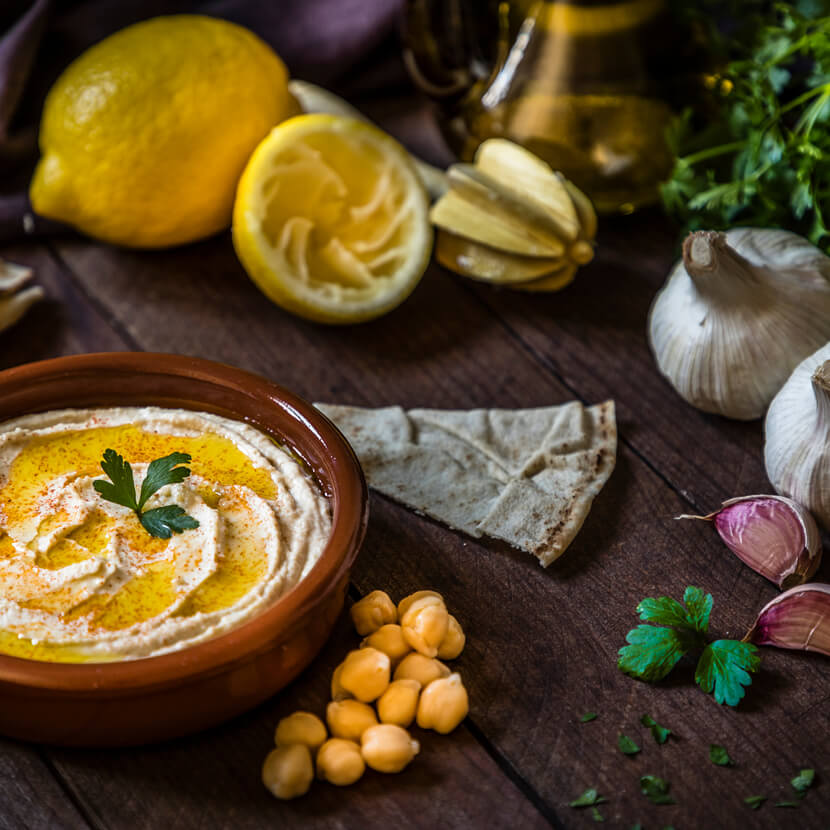
Let’s take a closer look at two of the absolute classic dishes from the Levant region.
Let’s start with Baba Ghanoush. This purée made from eggplants and sesame paste (tahini), which is served as a dip or a side dish (with falafel, for example), is easy to make – even for people who are new to cooking. To prepare the dip, eggplants are grilled and peeled before being puréed, mixed with tahini and seasoned with garlic, salt, pepper, cumin and lemon juice. Add a little more olive oil before serving, and garnish with fresh parsley or coriander if desired. And if you’re in a hurry, here’s our ready-made baba ghanoush – just click here.
One of the absolute classics of the Levant is hummus. In Lebanon, the Palestinian Territories, Israel and Syria, especially, it is a national dish. If you want to get your hands on it ready-made, you can simply order it here.
The recipe is very simple. Chickpeas or broad beans are toasted slightly before being puréed with tahini, olive oil, lemon juice, salt and seasonings such as garlic and cumin. Just drizzle a little olive oil and sprinkle some fresh herbs on top to finish, and there you have it! Add a little paprika or chili to give the dish a piquant note – or how about making things a little fruitier? Our friends at NENI have these amazing hummus variations for you – and they’re all just a click away.
Sitting down at the table with neighbors, friends and family. Talking, laughing, discussing, all while eating and drinking: that’s the essence of the Levant and what we can learn from the Levant.
the recipes
